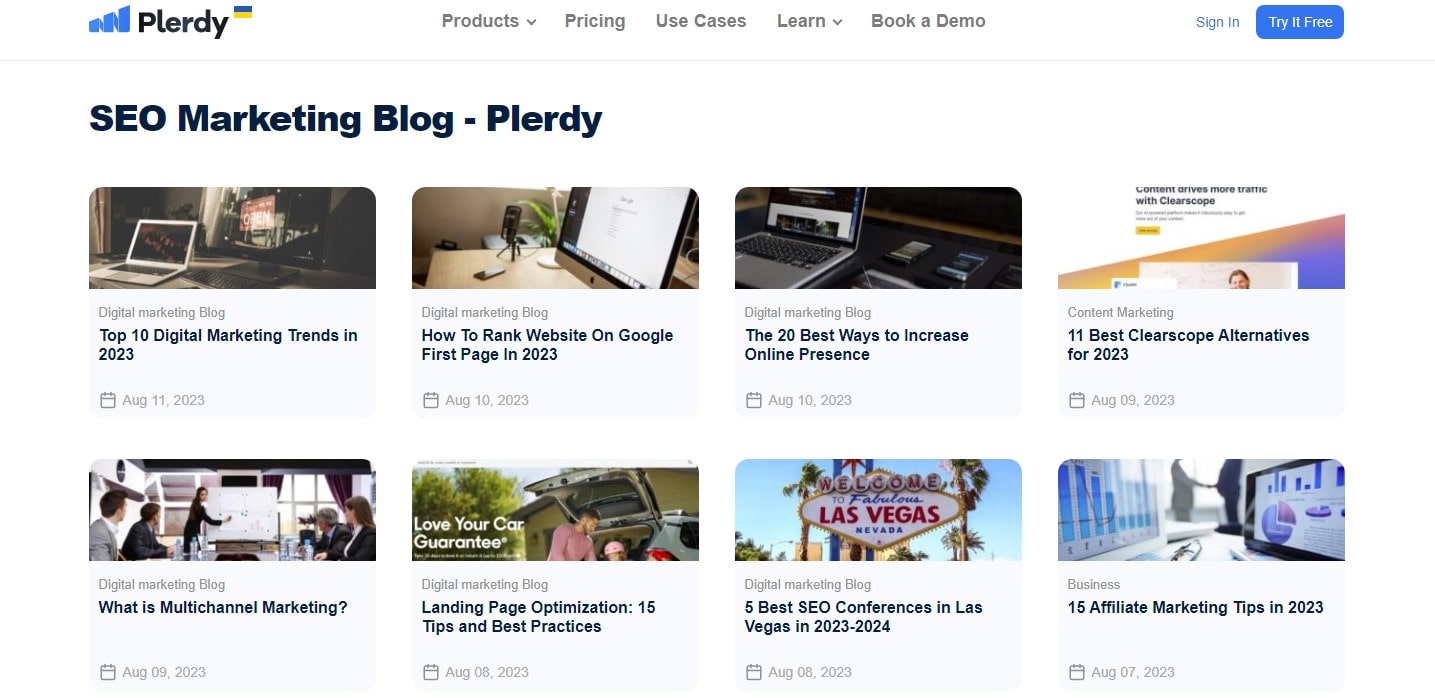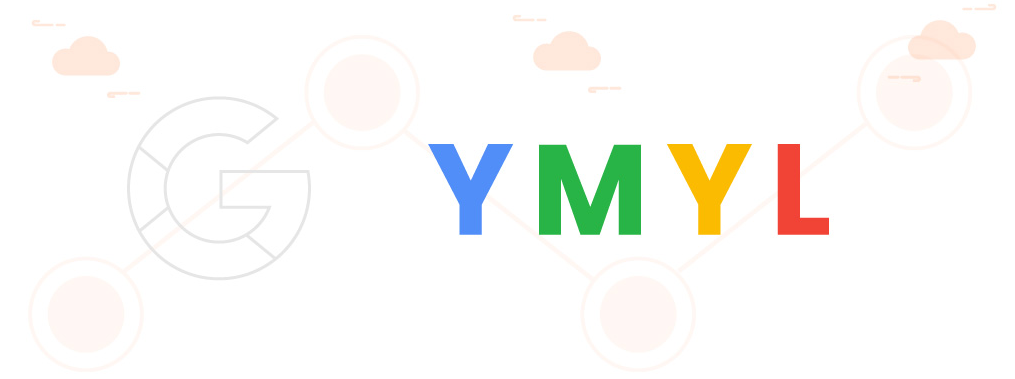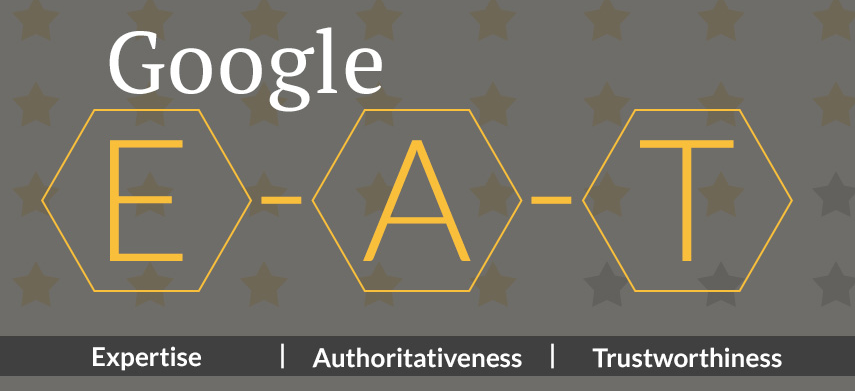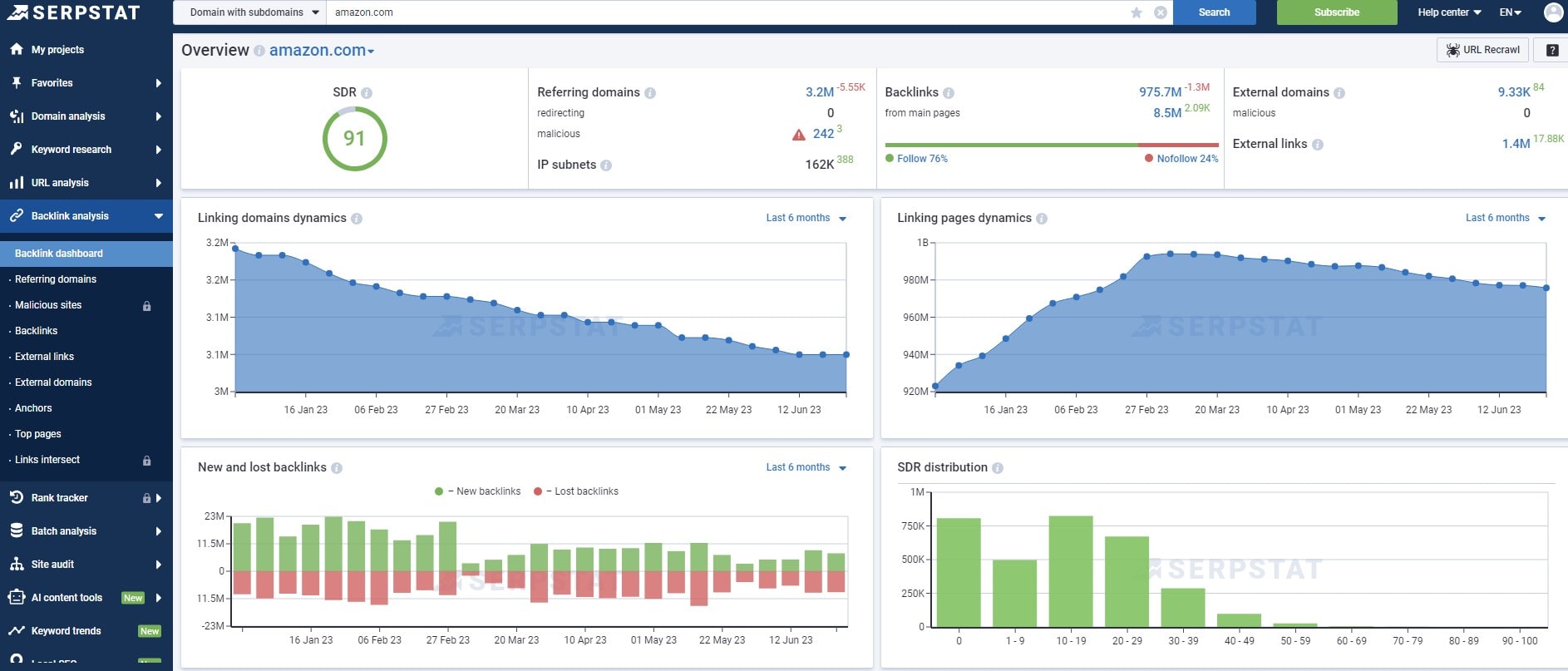Mastering the SEO complexities of Google can feel like navigating a maze in the busy digital marketplace. Here, we have E-A-T, a fundamental principle in SEO that directly affects how well Google ranks your content: expertise, authority, and trustworthiness. The foundation of effective SEO strategy is this triad of attributes, not a mere catchphrase. E-A-T is at the vanguard, helping writers craft content that appeals to human readers and Google’s algorithms. It’s all about creating material that exudes knowledge, commands respect, and establishes credibility. Nowadays, search engine optimization is more like an art form, using high-quality content enhanced with E-A-T as your digital paintbrush rather than merely focusing on keywords or backlinks. Keep Plerdy in mind while you maneuver through the complexities of search engine optimization. With this tool, you can examine your site from every digital marketing angle, learning how users behave. The three pillars of digital success—expertise, authority, and trust—become the E-A-T acronym, and your content will thrive under Google’s careful eye.

Definition of E-A-T
Dive into E-A-T, and you’re unpacking what makes content thrive in Google’s eyes. It’s a measure that separates authoritative, impactful content from the fleeting and forgettable. Here’s what each letter stands for in this critical SEO trifecta:
- Expertise – Are you a whiz in your field? Flaunt that know-how.
- Authority – Does your content command respect? Let your insights lead the charge.
- Trustworthiness – Is your content the real deal? Build that trust.
Let’s break it down. Say you’re a fitness guru. Your articles aren’t just well-crafted pieces but treasure troves of expertise that help readers crush their workout goals. Or you’re dishing out financial advice; your authority shines through content that speaks to your track record of savvy investment tips.
E-A-T isn’t a passing fad in Google’s domain—it’s the backbone of SEO success. As Google’s algorithm evolves, it’s clear—content that doesn’t just rank but resonates has E-A-T in its DNA.
To hit the mark with E-A-T:
- Highlight credentials that scream expertise.
- Generate buzz with content that cements authority.
- Win trust by nailing the facts every single time.
E-A-T is more than a buzzword; the pulse of content makes a splash in Google’s vast ocean. As the SEO landscape shifts, those who master E-A-T don’t just keep up—they set the pace.
The Importance of E-A-T in SEO

In the high-stakes game of SEO, E-A-T holds the ace. Google now rewards authoritative, trustworthy, and informative material. Content creators are now, more than ever, on the hook to prove their mettle in their respective niches. Why? Because E-A-T is the backbone of Google’s mission to direct users to the most reliable sources of information.
When Google’s algorithms evaluate content, they’re sifting through pages to find those gems that exhibit:
- Expertise that leaps off the page.
- Authority recognized across the web.
- Trustworthiness that cements user confidence.
For SEO specialists, weaving E-A-T into the fabric of your content strategy isn’t just a recommendation—it’s imperative. Let’s say you’re in the health sector; your content needs to exude the expertise and trustworthiness that Google—and your readers—demand. Financial advisors crafting content will find their authority under the microscope, as Google places immense value on credible advice in this critical area.
Embracing E-A-T means:
- Dishing out content grounded in solid expertise.
- Ensuring each piece amplifies your voice of authority.
- Building a fortress of trust around your content.
This is not just about peppering articles with keywords. It’s about delivering a content experience that resonates with authenticity and depth. SEO is no longer just about playing the Google game—it’s about leading with value, clarity, and trust. As Google’s algorithm smartens up, only the content that embodies E-A-T will rise to the top, making it an indispensable ally in your SEO arsenal.
Components of E-A-T
Expertise, Authority, and Trustworthiness (E-A-T) serve as the core components Google evaluates to rank content. E-A-T isn’t just SEO jargon; it’s the standard that separates credible, impactful online content from the forgettable masses.
Expertise is the launchpad, ensuring that content creators don’t just know their stuff—they can back it up with experience and recognized skill. For example:
- Medical content shines when penned by healthcare professionals.
- Technical SEO insights hit harder when shared by seasoned SEO strategists.
Authority is your digital clout—earning you a nod of respect from Google and your peers. It’s about:
- Crafting pieces that become cited resources.
- Drawing inbound links from reputable sites in your sector.
- Establishing a brand voice that’s both recognized and respected.
For marketers, authority might translate to guest posts on major industry platforms, setting the stage for thought leadership.
Trustworthiness is the bedrock, the non-negotiable in Google’s E-A-T criteria. Building trust means:
- Delivering content that’s accurate and verifiable.
- Maintaining a secure site where personal data is ironclad.
- Garnering positive user engagement that signals content reliability.
In e-commerce, trust can mean the difference between a bounce and a sale, and it’s cemented with user reviews and secure checkout processes.
Incorporating E-A-T into your content is not just about SEO; it’s about weaving a tapestry of genuine value that Google recognizes and rewards. E-A-T is an SEO-friendly content approach that boosts your Google and audience rankings.
E-A-T and Your Content Strategy

Digital marketers consider E-A-T to be like sewing a custom-fit suit—essential for that polished look Google and readers love. Your SEO should follow E-A-T throughout every content you publish to meet Google’s high expectations. How to authority, weave expertise, and trustworthiness into your content:
- Pin down expertise by spotlighting the smarts behind your words. If you’re a culinary whiz, dish out content peppered with professional insights that only a kitchen veteran would know.
- Button up authority by showcasing accolades and endorsements. In the tech sector, for instance, getting cited by eminent tech forums can catapult your content’s credibility.
- Hem in trustworthiness with facts checked and sources cited. In finance, backing up claims with data from authoritative institutions can secure your content’s trust factor.
Craft content that ticks these boxes, and you’ll tailor an SEO strategy robust enough for Google’s algorithms. Here’s a rundown:
- Craft content with a clear byline of qualified experts.
- Back assertions with data, awards, or peer-reviewed citations.
- Engage with and respond to your audience to bolster trust.
Whether your niche is gourmet cooking or personal finance, E-A-T isn’t just an SEO buzzword—it’s the fabric of content that ranks and resonates. Ignite your SEO strategy with E-A-T, and watch your content’s credibility—and Google rankings—climb.
E-A-T in Different Types of Websites

In Google’s SEO, E-A-T takes center stage, particularly for YMYL websites where stakes in expertise, authority, and trustworthiness are sky-high. E-A-T is Google’s benchmark for content that could significantly impact users’ health, finances, or safety. On these platforms, showcasing E-A-T is non-negotiable:
- Financial advisors must weave their qualifications and market wisdom into content that navigates the complexities of investing.
- Health portals need contributions from certified professionals to discuss medical treatments, ensuring information is both lifesaving and life-enhancing.
Here, Google scrutinizes content with a fine-tooth comb, as the potential impact on users’ lives is profound. The accuracy and depth of information on these sites aren’t just about ranking—it’s about responsibility.
Switching gears, non-YMYL websites, while not under the same intense Google gaze, still benefit from strong E-A-T:
- Lifestyle bloggers gain traction by building a rapport with readers and sharing personal anecdotes that underscore their authentic voice and lived experience.
- DIY aficionados or tech reviewers boost their SEO by diving deep into their crafts, offering practical advice grounded in personal expertise and trust.
E-A-T heavily influences user engagement and satisfaction for these sites—crucial metrics for Google’s SEO algorithms. And while the impact may not be as dire, the commitment to E-A-T still speaks volumes about a site’s quality and reputation.
To sum it up, E-A-T distinguishes content on all types of websites:
- In YMYL spaces, it’s about safeguarding users with impeccable, authoritative content.
- In non-YMYL arenas, it’s about fostering trust and authority through genuine, well-crafted stories and advice.
To acquire Google’s and your audience’s trust, your SEO plan must include E-A-T, whether you’re operating a YMYL site or writing for casual domains.
E-A-T and Google’s Search Algorithm Updates

As Google continually updates its search algorithm, the emphasis on E-A-T becomes more pronounced, weaving through the SEO fabric like a golden thread. With each tweak and turn, Google’s algorithms are honing in on content that exemplifies Expertise, Authority, and Trustworthiness, transforming the SEO landscape into one where quality is king.
For niche experts and seasoned professionals, this focus on E-A-T signifies a shift toward content that informs and comes from verifiable sources. Take, for example, the financial industry, where advice once doled out by any self-proclaimed guru now requires backing from certified professionals to gain traction in SEO rankings.
These updates have crucial implications:
- Content must be authored or reviewed by industry experts to reflect expertise.
- Authoritative sites should cite your content, lending it the SEO weight of authority.
- Content must be accurate and user-friendly to meet Google’s trustworthiness criteria.
Whether breaking down complex legal principles or offering health advice, content must pack an E-A-T punch to satisfy Google’s search algorithms. By aligning with E-A-T, you’re not just optimizing for SEO; you’re building a digital reputation that Google and, in turn, users will come to trust. The relationship between E-A-T and Google’s search algorithm updates is clear: to thrive in SEO, your content must be crafted with a keen eye for these three pillars. This isn’t about chasing algorithms—it’s about creating content that stands the test of Google’s evolving SEO standards.
Improving E-A-T for Better SEO
Elevating E-A-T within your SEO strategy is a surefire way to signal Google that your content is a cut above. By amplifying expertise, authority, and trustworthiness, you cater to Google’s algorithms, boosting your content’s visibility and user trust.
To enhance E-A-T:
- Spotlight the expertise with author bios highlighting credentials and experience, which is particularly effective in healthcare niches where medical professionals can underscore their specialized knowledge.
- Bolster authority by scoring guest spots on reputable sites, which, for SEO consultants, could mean contributing to influential tech blogs, lending their content an authoritative edge.
- Fortify trustworthiness by doubling down on fact-checking and securing your site’s connections, an approach that e-commerce sites can leverage by incorporating verified user reviews and robust SSL certificates.
Crafting content that resonates with E-A-T is about dialing up credibility and relevance in Google’s eyes. It’s a harmonious blend of showcasing qualifications, garnering reputable endorsements, and delivering consistently reliable content. When SEO strategies intertwine with E-A-T, you’re not just ticking off SEO to-dos—you’re creating content that establishes and reinforces your standing in the digital landscape.
For content creators, this means:
- Presenting top-tier content aligned with the latest in industry developments.
- Engaging with the audience in a transparent, authoritative manner.
- Ensuring the user experience on your site reflects security and authenticity.
Ramp up your content’s E-A-T, and watch as Google takes note, rewarding your efforts with enhanced SEO outcomes. It’s a strategic play that pays dividends in today’s competitive online space, where trust is given and earned, one piece of content at a time.
The Role of Backlinks and Reviews in E-A-T

Backlinks and reviews are pivotal in signaling E-A-T to Google’s algorithms, acting as endorsements that amplify a website’s credibility. In the world of SEO, they’re akin to word-of-mouth referrals and trust badges that content can proudly wear.
Backlinks serve as a nod of approval from one site to another—an indicator that someone else vouches for your content’s quality. This is particularly impactful in niches like legal or academic writing, where a link from a prestigious institution can significantly bolster a site’s authority. To leverage backlinks effectively:
- Aim for quality over quantity, securing links from esteemed, relevant sites.
- Engage in guest blogging on authoritative platforms to enhance your site’s profile.
- Avoid link schemes that can backfire and undermine your credibility.
Reviews, on the other hand, are trust signals from users, reflecting real-world validation of your content or products. E-commerce sites, for instance, can see a surge in trustworthiness when they accumulate positive, authentic customer reviews. Strategies to harness the power of reviews include:
- Encouraging users to leave feedback post-purchase or content consumption.
- Responding professionally to good and negative feedback.
- Displaying testimonials prominently on your site.
Backlinks and reviews aren’t simply good for SEO—they generate trust and authority online. Google rewards sites with higher rankings and visibility for content supported by credible sources and user reviews. SEO specialists must understand backlinks and reviews to create a content strategy that meets Google’s E-A-T standards for expertise, authority, and trustworthiness.
Measuring the Impact of E-A-T on SEO
Calculating E-A-T’s SEO impact is like solving a complicated puzzle: you must observe how Google’s algorithms react to your material. The interplay between E-A-T and SEO isn’t about a quick spike in rankings—it’s a long game focused on building a sustainable and authoritative online presence.
To gauge the influence of E-A-T on SEO, savvy content strategists monitor a variety of metrics:
- Organic Traffic Growth: A steady increase suggests that Google views your content as valuable, often due to high E-A-T.
- Search Engine Rankings: Tracking keyword positions over time can indicate how Google assesses your expertise and authority.
- Backlink Profile: Quality backlinks from authoritative sites reflect trust and can bolster your E-A-T.
- User Engagement: Content credibility can be measured by time on site, bounce rate, and comments.
- Conversion Rates: For E-commerce, an uptick in sales signals that users trust and value your content and products.
Content that demonstrates expertise, such as in-depth financial analysis by a certified economist, typically garners attention from users and Google, leading to improved SEO outcomes. Likewise, content from healthcare experts will often translate to higher trust signals, pushing SEO efforts into a higher gear.
Assessing the E-A-T impact involves aligning your content development with Google’s affinity for expertise, authority, and trustworthiness. This strategic alignment ensures that every article, blog post, or white paper you publish meets SEO standards and aligns with Google’s ongoing commitment to prioritizing high-quality, reliable content.
In the digital marketplace, content consistently exhibiting E-A-T is content that Google deems worthy of a larger audience, translating to SEO gold. By tracking these key indicators, you can fine-tune your approach, ensuring that your content strategy and SEO efforts are aligned and amplified in the eyes of Google and your target audience.
Challenges and Misconceptions About E-A-T
Tackling E-A-T within SEO presents a unique set of challenges and misconceptions. A common fallacy is that E-A-T is a direct ranking factor that Google explicitly measures. While Google has not defined E-A-T as a direct ranking signal, its principles heavily influence content quality evaluation, indirectly impacting SEO.
Content creators often need help demonstrating expertise, especially in information-rich fields. Even those with bona fide knowledge may need help to convey their expertise in a way that resonates with Google’s algorithms. For example:
- A tech blogger might have deep industry knowledge but need more external recognition that cements their authority.
- A nutritionist with sound advice might fail to present content that engages users, thus not fully reflecting trustworthiness.
These issues underscore the nuanced challenges within E-A-T:
- Achieving recognition as an authority in a niche brimming with voices.
- Maintaining the balance between showcasing expertise and creating accessible content.
- Building a bedrock of trust in an era where misinformation can rapidly undermine credibility.
Overcoming these obstacles demands a multi-faceted approach:
- Partner with established experts to co-create content, enhancing perceived expertise.
- Earn backlinks from reputable sources to reinforce authority.
- Prioritize user experience and factual accuracy to solidify trustworthiness.
Content strategies must navigate these complexities to align with Google’s E-A-T expectations, focusing on quality, depth, and reliability. Whether for a gourmet cooking site or a financial advisory blog, embracing these challenges head-on will pave the way for SEO strategies that meet Google’s standards and exceed them, resulting in content that stands out for its expertise, authority, and trustworthiness.
The Future of E-A-T in SEO

Peering into the SEO crystal ball, the future of E-A-T shines bright. As Google improves its algorithms, content knowledge, authority, and trustworthiness will rise. SEO strategies that pivot on E-A-T are not just riding the wave—they’re steering it. This trend is set to deepen its roots across all content landscapes.
Here’s what’s on the horizon:
- Advancements in AI and ML: Google will continue to refine its use of artificial intelligence and machine learning, getting smarter at discerning the nuances of E-A-T in content.
- User Experience (UX) Signals: Google’s algorithms will likely emphasize UX as a trust signal, intertwining it more closely with E-A-T and SEO.
- Semantic Search Enhancements: The evolution of semantic search will further prioritize context, making the depth of expertise in content even more critical.
Specialized sectors, such as medical and financial, are set to benefit greatly from these advancements, with Google giving an edge to content that exudes genuine authority and expertise. Content creators in these areas will need to double down on their E-A-T efforts, ensuring that every article, every piece of advice, and every instructional guide meets the highest standards of quality and accuracy.
SEO is changing toward making E-A-T a need, not a luxury. Google’s ongoing commitment to delivering reliable, authoritative content means that E-A-T will remain a central focus, guiding the strategies of those who aim to excel in SEO. The fusion of E-A-T and SEO is set to become more seamless, with Google favoring content that doesn’t just match keywords but also demonstrates indisputable value to its users.
Conclusion
As we wrap up our deep dive into E-A-T in SEO for Google, it’s clear that these three letters—Expertise, Authoritativeness, and Trustworthiness—are more than just SEO buzzwords. When creating content that satisfies the consumer and Google’s algorithms, they play a crucial role. Consider how E-A-T principles apply across various niches:
- In healthcare, content must showcase medical accuracy and be authored by qualified professionals.
- Advice from trustworthy financial professionals is essential in the world of finance.
- Detailed and trustworthy recipes, typically penned by seasoned chefs, are expected in the culinary world.
Here’s a bulleted recap of E-A-T’s impact:
- Expertise: Showcasing specialized knowledge.
- Authoritativeness: Establishing a site or author as a go-to source.
- Trustworthiness: Ensuring content is accurate and reliable.
E-A-T is not just a Google-centric concept; it’s a universal standard for quality. If you’re an SEO expert, content developer, or webmaster, you should base your strategy on these ideas. With E-A-T optimization, you may satisfy both Google’s SEO guidelines and your audience’s need for trustworthy content. In essence, E-A-T transcends SEO; it’s about crafting content that earns the respect of both search engines and real people. As the digital landscape evolves, remember that Google, E-A-T, and SEO are interconnected—each element supporting and enhancing the other to create a robust, user-centric web experience.


 300+ G2 reviews
300+ G2 reviews